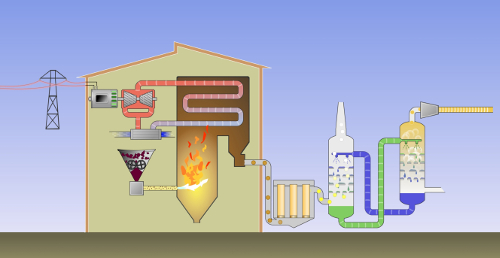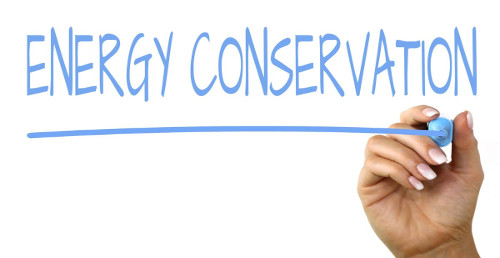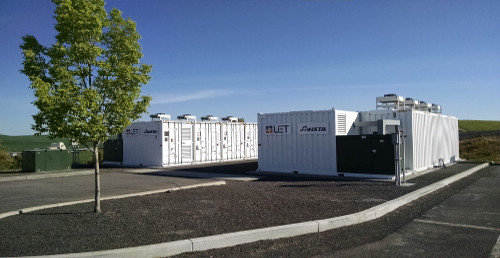
Image credit: The Jon B. Lovelace Collection of California Photographs in Carol M. Highsmith's America Project, Library of Congress, Prints and Photographs Division.
Challenge
Our energy system is in desperate need of modernization and reform to
increase resilience and bring low-cost clean energy to more Americans. Power outages
cost the U.S. economy up to $70 billion every year, and one in three U.S. households
face challenges paying their energy bills. Too many of our homes, schools, and offices are inefficient, contributing to high
energy bills. And for too long, we have ceded ground on manufacturing
to our global competitors.
Solutions
The Infrastructure Investment will help modernize our power grid by building and
upgrading thousands of miles of resilient transmission lines to reduce outages and
energy costs and facilitate the expansion of clean energy. It will invest in energy
efficiency and clean energy improvements in our homes, schools, businesses, and
communities to make them cleaner and more affordable. And it will fund new programs
to support the development, demonstration, and deployment of cutting-edge energy technologies, while also
creating good paying jobs and investing in manufacturing in communities across the
country.
The Infrastructure Investment and Jobs Act funding includes four major areas, covered under this section:
- Delivering clean power (~$21.3 billion)
- Clean energy demonstrations (~$21.5 billion)
- Energy efficiency and weatherization retrofits for homes, buildings, and communities ($6.5 billion)
- Funding for clean energy manufacturing and workforce development ($8.6 billion)
The U.S. Department of Energy (DOE), through the Office of the Under Secretary for Infrastructure, is focused on working across the public and private sectors to help the U.S. transition to
the clean energy economy.
With more than $97 billion in investments through the Infrastructure Investment and Jobs Act and the Inflation Reduction Act, DOE is embarking on a new era focused on the rapid commercialization,
demonstration, and deployment of clean energy technologies. DOE is playing a critical role in efforts to rapidly lower energy costs and create new industries
with the high-quality jobs that are guaranteed to boost domestic manufacturing capabilities while strengthening U.S. global competitiveness.
Carbon Capture

DOE is delivering carbon management solutions to ensure energy security and reliability, and create good-paying jobs.
Energy Diversity

Diversifying our nation’s energy by investing in clean sources like hydroelectric and nuclear power helps us avoid energy disruptions, strengthen our energy security, and provide reliable
clean energy power to millions of households. Investments in our clean energy future hold enormous potential to lower emissions, create new jobs, and build an even stronger economy.
Energy Efficiency and Conservation

Americans spend over $400 billion each year to power our homes and commercial buildings, which consume 40% of the nation's total energy. Investments in efficient buildings will
help us do more with less energy, alleviate pressure on our electric grid, allow for greater use of renewable and sustainable energy supplies, and ensure that we have available
reliable energy supplies well into the future.
Energy Storage and Rare Earth Security

Energy storage solutions are transforming the electric power industry and helping to accelerate the full decarbonization of the electric grid. Energy storage projects will improve the
reliability of transmission and distribution systems, especially in traditionally high-energy cost rural areas; more efficiently supply energy at peak periods of demand on the grid;
and increase use of existing equipment, postponing or eliminating the need for costly upgrades.
Grid Resiliency

Many pathways exist for the U.S. to meet our clean energy goals, but they all require upgrading and expanding our aging transmission infrastructure. Our strategic investments will
accelerate the deployment of new transmission lines to connect Americans to cleaner, cheaper electricity; improve the resilience and reliability of the grid; and protect against
disruptions due physical and cyberattacks or extreme weather.
Additional Information
The power and clean energy provisions in the Infrastructure Investment and Jobs Act cover a
variety of technologies, funding across competitive and formula formats, and
potential recipient including State, local, territorial, and Tribal governments, utilities, and others.
To guide program design and help potential
recipients prepare to apply for and receive funding, the Department of Energy will
issue requests for information, notices of intent, webinars, and other stakeholder
engagement opportunities.
To stay apprised of these opportunities, potential applicants can check the
U.S. Department of Energy
for the latest announcements and upcoming engagements.